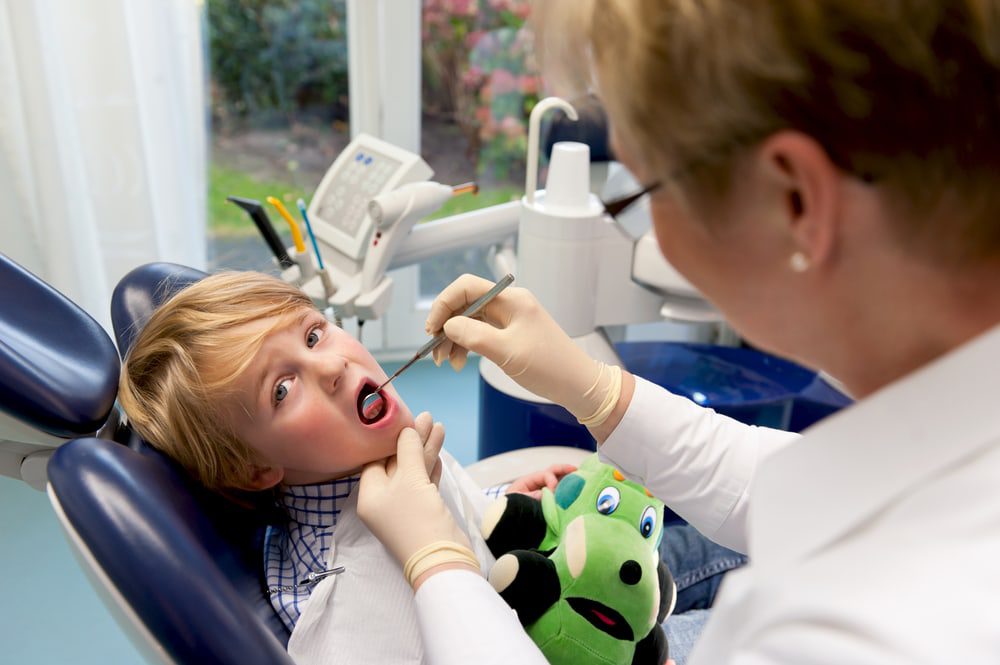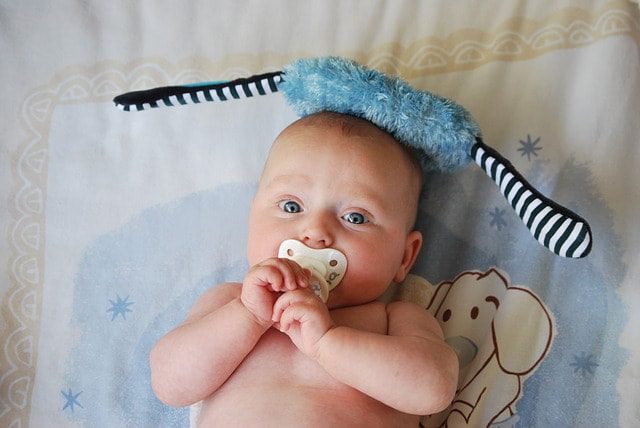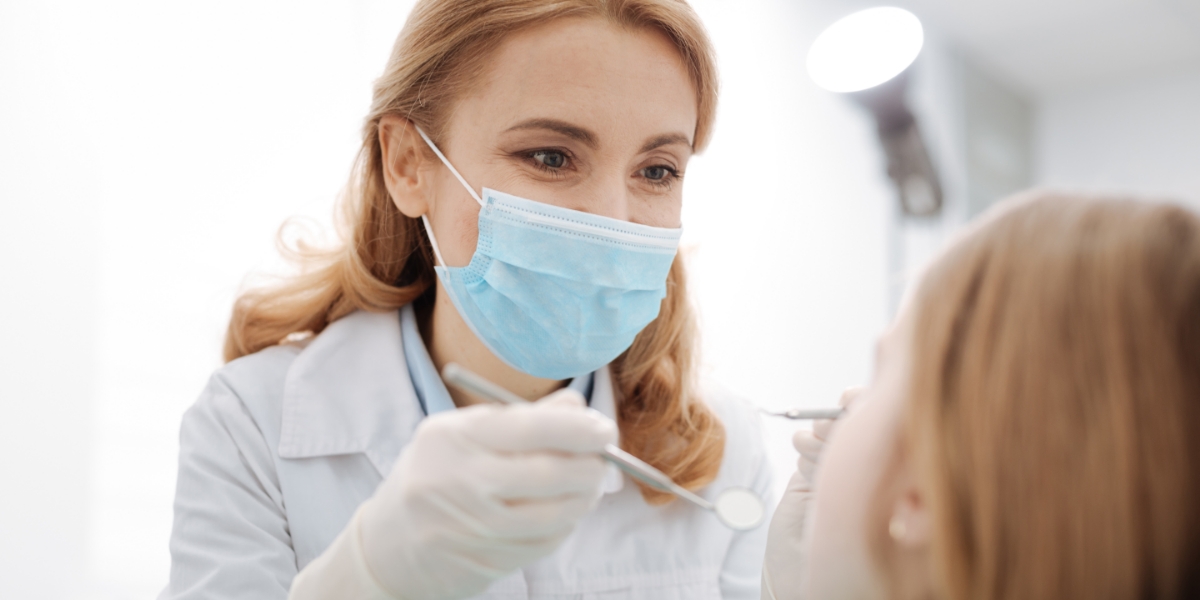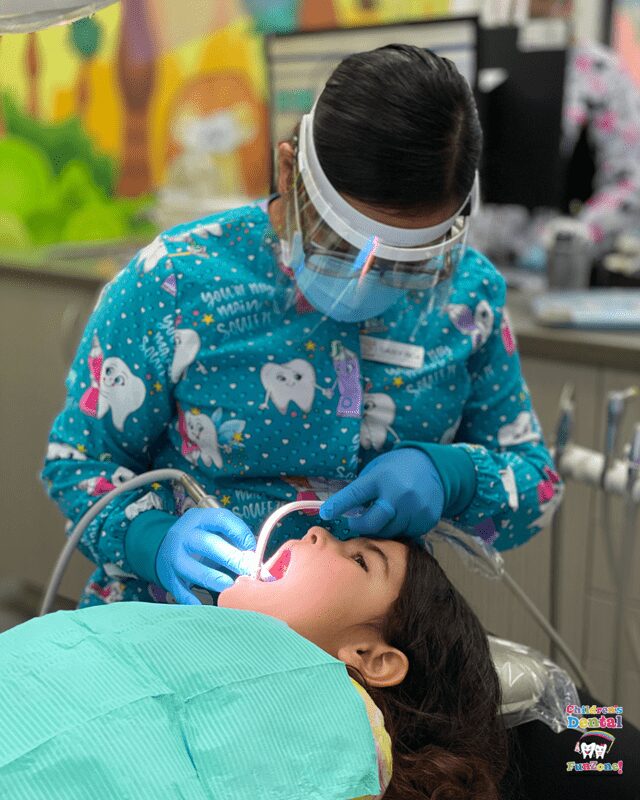Infant milestones include physical moments like learning to sit, crawl, and walk. They also involve tooth eruptions. While the physical moments are joyful and fun, the eruption of teeth can be uncomfortable.
Knowing the baby teeth eruption timeline helps parents understand their child’s behavior to manage their discomfort.
When Does Tooth Eruption Start and End
Baby teeth begin erupting around six months of age. Before the eruption of baby teeth, the gums swell slightly and babies often drool more than usual. The first two teeth that appear are the lower bottom front teeth, also called the central incisors.
Once those first two baby teeth erupt, four front teeth soon follow. Then, the teeth fill in, often erupting in pairs and alternating between the top and bottom jaw. All teeth should be in place by the time the child is three years old.
The primary teeth or deciduous teeth usually stay in place until they begin falling out around age six or seven. Parents can expect that about four teeth will erupt every six months. After the central incisors erupt, the teeth erupt in pairs, with one on the right and left simultaneously appearing.
Those young teeth help set the stage for their adult teeth. Your child’s jaw and facial bones begin to create space for the adult teeth.
If you saw an X-Ray of your child’s jaw, you would see the adult teeth below the gum line. During the elementary school ages, children have primary and adult teeth in their mouths.
A baby teeth chart can help you know what to expect. You’ll know when to expect the eruption of teeth and which will come first. In general, you can expect teeth to appear at the following times:
|
Bottom central incisors |
6 to 10 months |
|
Top central incisors |
8 to 12 months |
|
Bottom lateral incisors |
10 to 16 months |
|
Top lateral incisors |
9 to 13 months |
|
First top molars |
14 to 18 months |
|
First lower molars |
13 to 19 months |
|
First top cuspids |
17 to 23 months |
|
First lower cuspids |
16 to 22 months |
|
Second top molars |
23 to 31 months |
|
Second lower molars |
25 to 33 months |
Types of Teeth
Humans have 20 baby teeth and 32 permanent teeth. The different types of teeth have special jobs. For example, the incisors cut and bite food, while the cuspids tear it. The molars chew and grind food. All teeth have a crown at the top, a visible neck, and a root below the gums.
The incisors have a thin edge at the top to cut through food. The cuspids are the pointy teeth that resemble canine teeth. The premolars and molars all have flat surfaces designed for grinding food.
The 20 teeth in a child’s mouth include four central and lateral incisors, four cuspids, and four first and second molars. The four teeth have two on the top and two on the bottom. They are opposite each other on the left and right sides, except for the central incisors which are next to each other.
Adults have 32 permanent teeth, with four lateral and central incisors and cuspids. They also have four first and second bicuspids, often called the first and second premolars, as well as three sets of molars known as the first, second, and third molars.
The first molars tend to erupt around age six. Many people know the third molars as their wisdom teeth.
Managing the Teething Process
The teething process can be uncomfortable. Many babies become fussy during the baby teeth eruption timeline. Knowing the answer to “when do baby’s start teething?” helps parents recognize the signs.
The teething process takes about a week, with the tooth erupting in the middle of the process. Some babies develop eruption cysts that look bluish-gray at the site of the new tooth. These do go away naturally.
If your baby is uncomfortable during the teething process, you can massage your child’s gums with a soft wet washcloth. Some babies like to chew on cool teething rings or wet washcloths. They also like to chew on fingers – theirs or a loved one’s.
Before giving your baby a pain reliever, talk to your pediatrician, as over-the-counter medications are not appropriate for all ages. Since babies drool more while teething, dry their chins and cheeks frequently to prevent additional discomfort from dry and irritated skin.
Why Caring for Baby Teeth is Important
A baby’s teeth care matters because baby teeth are placeholders for permanent teeth. If caregivers neglect their baby’s teeth, their children can have mouth pain, swelling and infections, and more dental problems.
Poor dental hygiene that leads to decay can slow a child’s growth from lack of sleep and subpar eating habits. Lack of sleep and malnutrition affects learning and brain development, too.
When baby molars decay and rot, the surrounding teeth fill the space, reducing the size. Adult teeth need space, and rotted baby teeth cannot create enough space. Children with decay and rot in their baby teeth usually become adults with dental problems.
Caring for baby teeth is important because a child’s gums and jawbones develop based on their baby teeth. If the teeth decay and rot, children have underdeveloped jaws, making their adult teeth less likely to grow healthily.
Other Primary Tooth Eruption Facts
Even though baby teeth eventually fall out, they are important for growth and development.
- Baby teeth help children develop understandable speech.
- They help children develop good nutrition, as children with decayed teeth feel pain when they chew.
- When baby teeth have decay or infections, the correlating adult tooth can have dark spots.
- Female babies tend to have a faster baby teeth eruption timeline when compared to male babies.
Conclusion
Understanding the baby teeth eruption timeline helps parents better understand how their children are feeling during the process. As babies cannot take care of their teeth on their own, parents need to regularly brush their children’s teeth to prevent decay and infection.
With proper care, baby teeth make room for adult teeth. Caregivers can help make the teething process more comfortable with cool wash clothes, chilled chew toys, and lots of love.
If you have any questions or concerns about your child’s baby teeth eruption timeline, the staff at Children’s Dental FunZone can help.




